
Asian Culture and Commodity in the City Centre of Tilburg
A walk in the busy alleys of Tilburg is enough to notice the cultural diversity that is displayed in the shop windows. Unlike chain stores, individual shops give a sense of authenticity. However, are these signs of authenticity genuine or just a sign of commodity; is their purpose to only lure customers?
To find out how signs of Asian culture(s) are visible in the linguistic landscape of the city center of Tilburg and whether or not these signs of authenticity are genuine, we focussed our research on three stores. These stores represent three important aspects of life: health, beauty, and nutrition. For health, we will analyze the storefront of the Jun Ho medical center, which is a Chinese pharmacy. For beauty, we looked at a nail shop in Tilburg’s main shopping street: TTV Nails & Spa. Lastly, we visited the Sin Fa Toko, which sells various products, but primarily focuses on the sale of foods. Of our three cases, the analysis on the Jun Ho medical center is the most extensive. The second and third cases are primarily discussed because they allow us to pay attention to additional aspects and introduce the recurring sign of the lucky cat.
ELLA (2.0) as a framework
Blommaert and Maly’s theoretical framework for Linguistic landscaping (Blommaert and Maly, 2016) will be used to describe and analyze the visual language and signs present at the publicly accessible spaces of the shops we visited. This framework can be used to find out what visual language in an area indexes. Linguistic landscaping offers us first-line insights into the mobility of people, languages, and cultures, which is often caused by globalization.
Although we have chosen not to structure our paper this way, we have looked at Blommaert’s three arrows during our analysis. These arrows are:
- Past, which is the conditions of the production of the sign(s) and the producers of the sign(s).
- Present, which is the placement of the sign(s) among other signs.
- Future, which are the addressees of the sign(s) and the conditions for the uptake of the sign(s).
To gain ethnographic background information, we interviewed the owners and/or workers of the shops.
Health
To gain more data on the linguistic and semiotic signs in the window of Junho Medical Center, we talked to a lady who has been working for the Chinese pharmacy since she arrived in The Netherlands. The lady that works in the Jun Ho Medical Center is originally from the Northern part of China.
The first time we visited the pharmacy, the women who were working there at the time did not agree to talk to us and gave as a reason that they were unskilled in English. We suspected, however, that the underlying reason was cultural differences, resulting in them not feeling comfortable talking to us. We visited the pharmacy once more in the hope of talking to one of the employees, but this time with the help of Xuefei Tang, a 26-year-old PhD student from China. Fortunately, the employee working at that time was willing to talk to us. The conversation took place inside the pharmacy and the language spoken was Chinese, which was made possible by Xuefei helping as our interpreter.
In contrast to Western medicine, Chinese healthcare is about preventing, not curing.
Before the conversation began, the employee offered us pillows to place on top of our chairs. We initially did not understand why, but Xuefei explained to us later that in Chinese culture, women should not sit on cold surfaces as this can have an immediate effect on their fertility. This perfectly suits the Chinese philosophy of health and healthcare; it is about prevention instead of curing. Western medicine helps us recover quickly from a specific problem. On the contrary, Chinese medicine can take a while before it helps. The worker said that if something is a natural process it cannot happen too quickly. This is a very different perspective on health care from what we are used to in the west.
The pharmacy has been there for about 14 or 15 years, the owners always having been of Chinese origin. In China, people rely on one another, thus the formation of social networks, “contacts”, where people suggest each other for job opportunities abroad with promising salaries and good living conditions is a common phenomenon. The worker we talked to was offered a job opportunity here in Tilburg about 20 years ago by some acquaintances and she immediately took the opportunity. The first 3 to 5 years were rough for her, but with the passing of time, her husband, relatives, and friends arrived in Tilburg for similar reasons, which strengthened her social network and made her life easier.
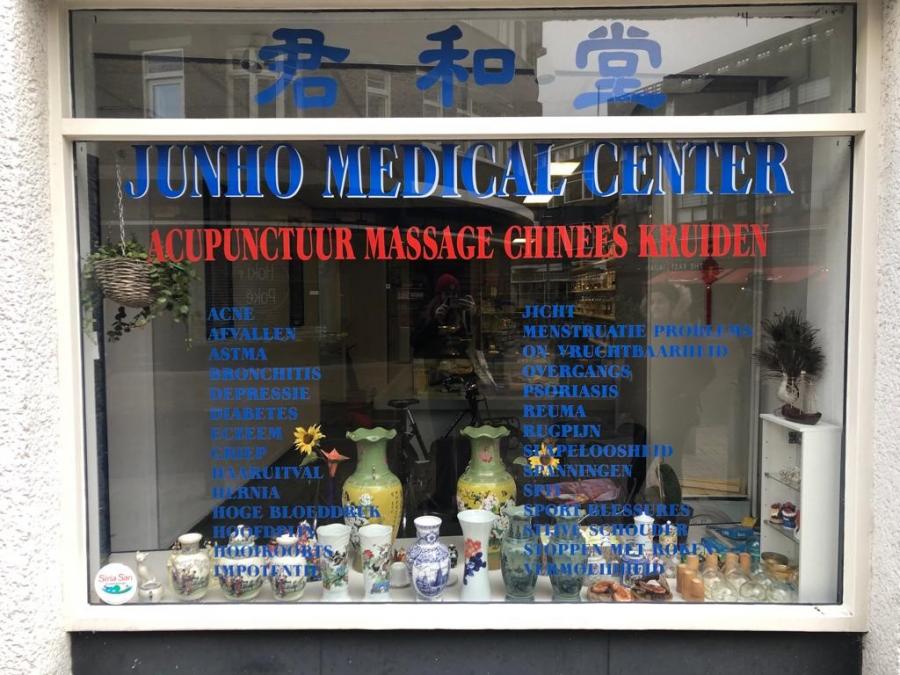
Figure 1) "The window of culture"
What drew our attention to the pharmacy in the first place was the “window of culture” (as the employee called it), which had figures of Chinese, Dutch and British origins. Most of the objects were there for decorative reasons. However, as we found out through our conversation with the employee, some of the vases were gifts from friends, and some of the objects used to belong to the children of the employees and functioned as toys.
The main reason for putting objects in the window that represent their culture is for the owners to establish their identity in the Netherlands and to be recognized as Chinese. Another reason for putting such decorations in front of the window is for the workers to feel at home in a foreign country. The reason for including non-Chinese objects is mainly to represent the idea that they also welcome Dutch locals. So to summarize, the objects in front of the window are a collection of gifts, souvenirs, and children’s toys that symbolize a desire to welcome both Dutch and Chinese clients into the shop.
The pharmacy offers a variety of treatments and services to many health issues, but they are best known for acupuncture and massage services. Most of the customers are Dutch and not Chinese, which is somewhat to be expected in order for the shop to be viable, because the total number of Chinese citizens in Tilburg is relatively small.
Examing the window displayed in figure 2, we see that the shop provides treatments against a lot of common illnesses. The ingredients that are used in Chinese medicine are natural, and an individual is admonished to take care of themselves according to the seasons, their gender and their age. This preventive approach of Chinese health care was explained above.
We could not help notice the linguistic mistakes on the “window of culture”. According to the worker, the mistakes are there because the first owner was not good in either Dutch or English. We were not the first ones to notice the errors, and the present owner is also aware of them but does not seem interested in correcting them.
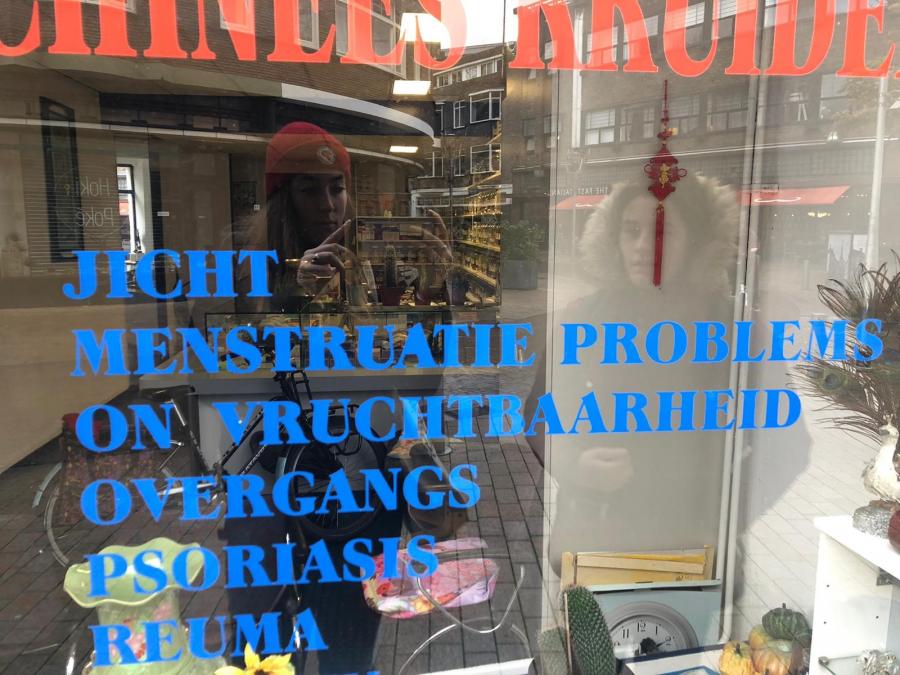
Figure 2) Language errors on "the window of culture"
The names of several illnesses are written on the window, refering to the problems the shop can provide treatment for. In figure 2 it says ‘’menstruatie problems” and “on vruchtbaarheid’’. The last word of “menstruatie problems” is in English, while the first is in Dutch. This mainly indexes that the first owner was not fluent in Dutch, as also corroborated by “on vruchtbaarheid” which is supposed to be written without a space between “on” and “vruchtbaarheid.”
All the described medical terms are in Dutch, except for the previously explained language error in “menstruatie problems”. The reason the first owner decided to opt for a window filled with Dutch terms has to do with the intended addressees of the linguistic signs. Since the largest group of potential clients is Dutch, it makes sense to target this audience.
The red letters ‘’acupunctuur massage chinees kruiden’’ seem to be single/independent words that refer to the practices offered at this pharmacy. “Chinees” (Chinese) is the odd one out, as it does not refer to a service offered. This could be meant as ‘’Chinese kruiden’’ (Chinese medicine), which would be another Dutch spelling mistake.
Although the objects in the window both include Chinese and Dutch signs to make the Chinese workers, as well as, the Dutch and Chinese clients feel welcome in the shop, the target audience is Dutch citizens. One perspective is that despite the original owner's limited Dutch and English linguistic repertoire, he or she still decided to put the text on the window in Dutch. Some of the objects behind the window as well as the Chinese signs on the window increase the cultural authenticity of the shop. However, unlike TTV Nails & Spa in the next section, these signs are not merely here to catch the attention of potential new customers; they also have personal value to the employees.
Beauty
TTV Nails & Spa is a nail shop in the heart of Tilburg. We were lucky enough to talk to the owner of the shop. She is originally from Vietnam and has been in the Netherlands for 18 years because of her Dutch husband. Despite her work in Tilburg, she lives in Roosendaal – a 40-minute drive. It was about 3 years ago when she started working in this shop and she learned to do nails in The Netherlands. Before her job in the nail salon, she worked in a bakery and in a Turkish shop. The Lucky Cat in front of the window is for positive economic prospects. (More on this under 'The Role of the Lucky Cat'). The lotus flowers on the walls are for decoration and may make the shop look more appealing to potential customers. All the women and men working there are from Vietnam.
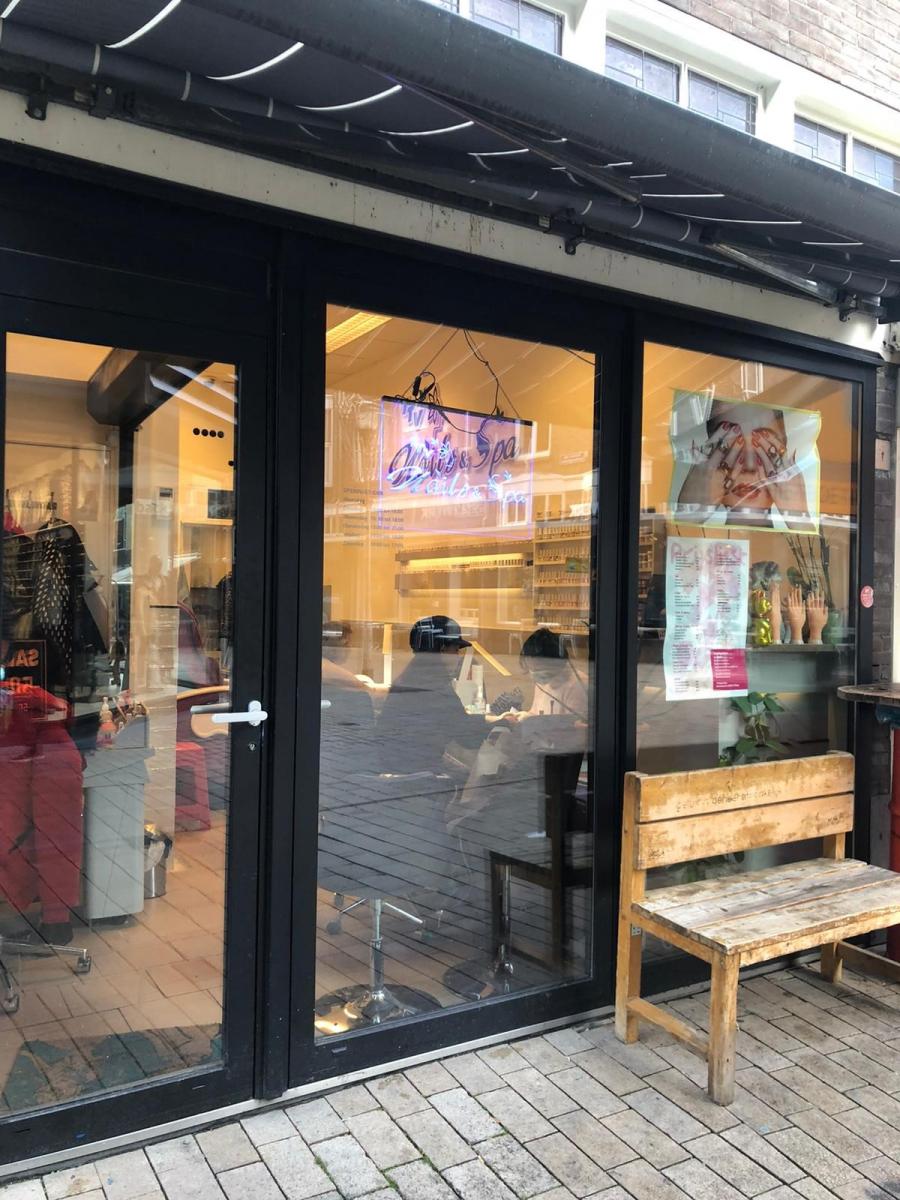
Figure 3) The outside of TTV Nails & Spa
Nutrition
Last but not least, The “Sin Fa” Toko is one of the other shops where we found the Lucky Cat alongside various other linguistic and semiotic signs. This shop sells a variety of everyday products but primarily focuses on the sale of food. According to the owner, the Lucky Cat was put on the cash register for decoration and advertising. Not only is a decorated shop more attractive to customers, because it gives a feel of authenticity, the shop also sells the lucky cats and other various decorations it displays. The owner told us that Lucky Cats are selling well as gifts. This is probably due to the original meaning of the Lucky Cat. Thus we can see a commodification of this cultural emblem taking place. (More on this under 'The Role of the Lucky Cat'.)
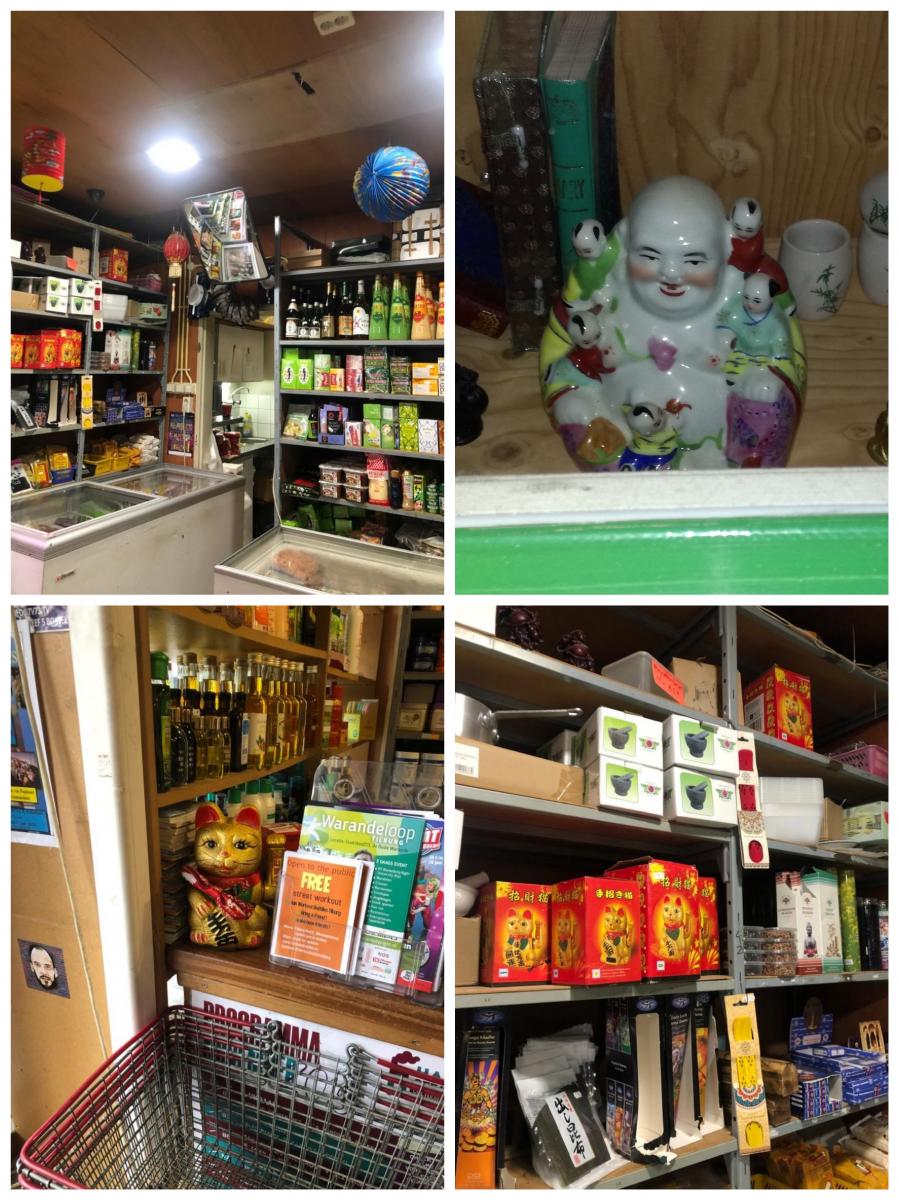
figure 4) semiotic signs of commodity in Sin Fa Toko
There are plenty of linguistic and semiotic signs to be found in the shop as well as outside. First, we will explain the logo of the shop itself.
The current owner told us, that the name “Sin fa” means beautiful flower in Chile. This took us by surprise because we had expected the origins of the shop to be Asian in nature because of the plethora of Asian signs inside of the store, such as the Lucky Cat, the traditional, Chinese red paper lantern in the back of the shop, and the buddhas on display. If it is the case that "Sin Fa" means beautiful flower in Chile, then it is not written in the official and administrative language of the country, which is Spanish. However, it may be written in one of the other languages of Chile, such as Mapudungun. Unfortunately, this is difficult to confirm as there are hardly any translation options available for Chile’s other native languages.
The flower in between the words looks like a Lapageria Rosea, also known as Chile’s national flower; the Copihue. This does strengthen the connection with Chile. What makes this connection even stranger, is that the original owner of the shop (45 years ago) was a woman of Indonesian descent. Jessie, a student from our class who is from Indonesia, did not think the sign had an Indonesian meaning, so the connection remains unexplained.
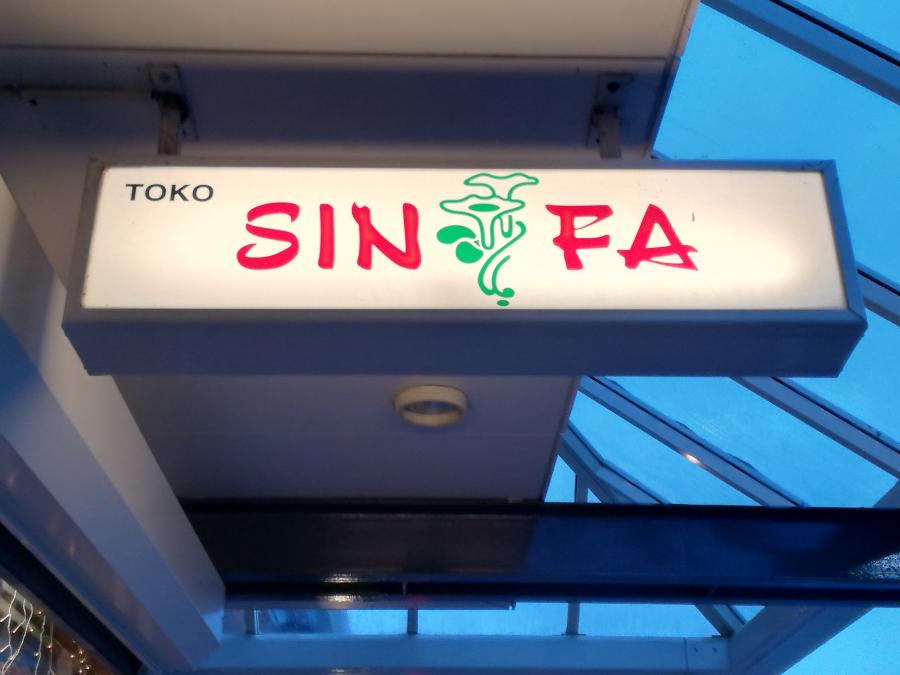
figure 5) The logo of Sin Fa Toko outside of the shop
Xuefei, the Chinese PhD student who went with us to Jun Ho Medical Center, had other ideas about what the logo could mean. She said that the left character refers to prosperity. The right character means development. These characters often appear together as the name of Chinese shops, restaurants, and companies. This would make more sense when looking at the Asian signs inside the store. However, it could just as well be that the signs inside the store only serve the purpose of increasing the authenticity of the shop and are there to attract potential customers.
The green color of the flower is not the original color of a Copihue, which is red. The green color that the shop used refers to freshness. The owner told us that fruit and vegetables are the best selling products, which is why it is logical that the shop wants their products to be associated with freshness. Many other Tokos, like Sin Fa, use similar colors to appeal to customers. Take for example the Asiana Superstore discussed in this Diggit article.
When looking inside the shop we found products from all over the world, as signified by the array of different languages on their packaging. This confirms that the target customer base of this shop is super diverse in terms of background. The owner said that they cater to Dutch customers, but also to Surinamese people, Dominican people, Antillean people, and many other groups. However, they do seem to prioritize Dutch speakers (no matter the nationality) as both their order sheet as well as any advertisements are in Dutch.
The role of the lucky cat
A recurring sign in the shops we visited was the Japanese Lucky Cat, which is why we want to provide a more in-depth explanation of this object. Lucky Cats are popular gifts, as we heard from the shop owners of Sin Fa, as well as popular items to put on display in shops. They are originally from Japan and depending on their pose, color, and attributes, they can have different meanings.
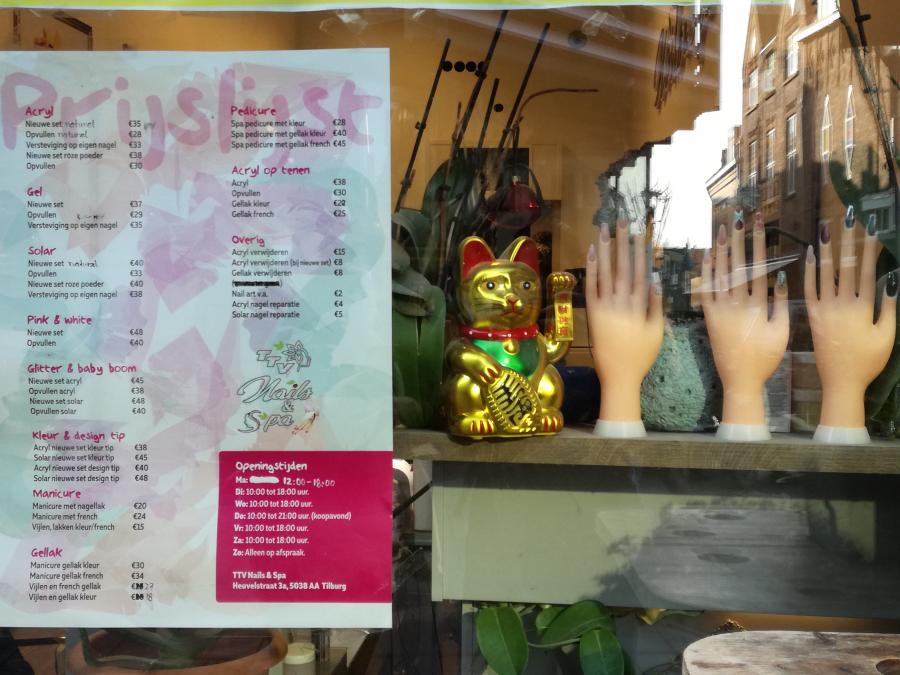
figure 6) The lucky cat in the window of TTV Nails & Spa
The one seen in the Sin Fa Toko has its right paw raised, which will bring wealth and good fortune to businesses. Its golden color and coin also refer to wealth and prosperity. The same version of the cat can be seen in the window of TTV Nails and Spa. There are two reasons a shop owner could place a Lucky Cat on display in their shop: either to invite economic success, as the original meaning of the Lucky Cat promises, or to make their shop seem more authentically Japanese or Asian to their customers. Our interviews seem to indicate the latter.
Conclusions
In order to gain a deeper and better insight into a culture, one has to look at as many aspects of a culture as possible. Hence, in this article, we explored three aspects of Asian culture(s): health (Jun Ho medical center), beauty (TTV Nails and Spa), and nutrition (Sin Fa Toko). We also found common characteristics (Lucky Cat) and learned a drop of Chinese wisdom. All the people we talked to shared a personal part of their story with us, which connected to their workplace in one way or another and represented their roots in unique ways. Asian cultures can be found almost everywhere around the world and have integrated into foreign environments.
What we learned throughout our research is that, in today’s globalized society, origin does not really matter when it comes to business, culture is a selling point. All three shops that we visited had various figures and products of mainly Asian origins, but also products and objects taken from non-Asian cultures. These figures enhanced the cultural authenticity of a shop, making it more exotic and attractive to customers, and different from the other shops. However, in contrast to the figures found in TTV Nails and Spa and the Sin Fa Toko that are there for commodification, the figures in the Jun Ho medical center had a more personal value.
To sum up, cultures travel when people migrate. Today more and more diverse cultural characteristics can be found standing next to one another and even language errors can be indicative of a specific culture. What is lost, however, in most cases is the connection to the cultural identity, due to commodification. There is a great difference between representing and selling a culture.
References
Blommaert, J. & Maly, I. (2016), Ethnographic linguistic landscape analysis and social change: A case study. In: Karel Arnaut et al (Eds.), Language and superdiversity. New York//London, Routledge, 197-217